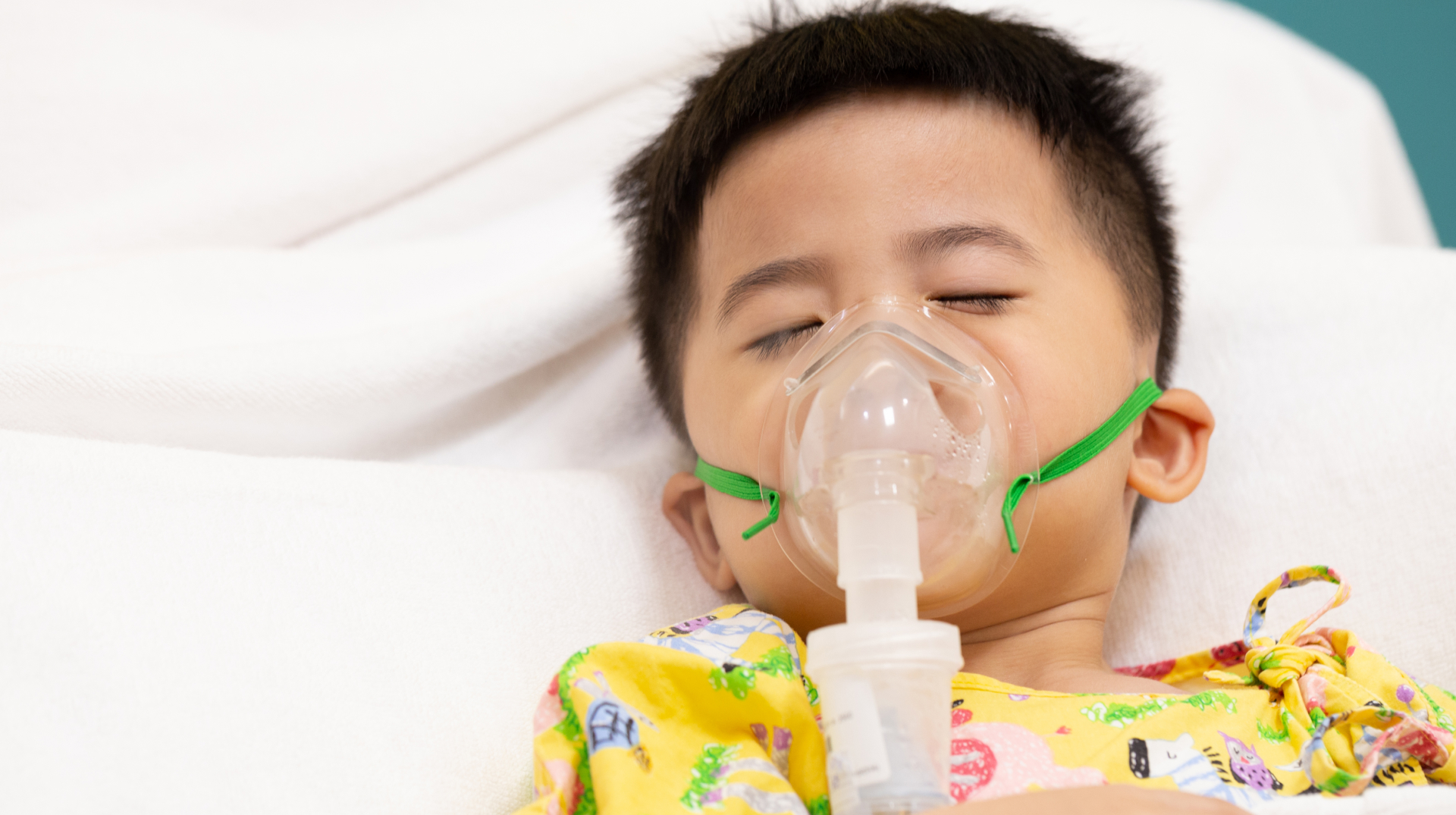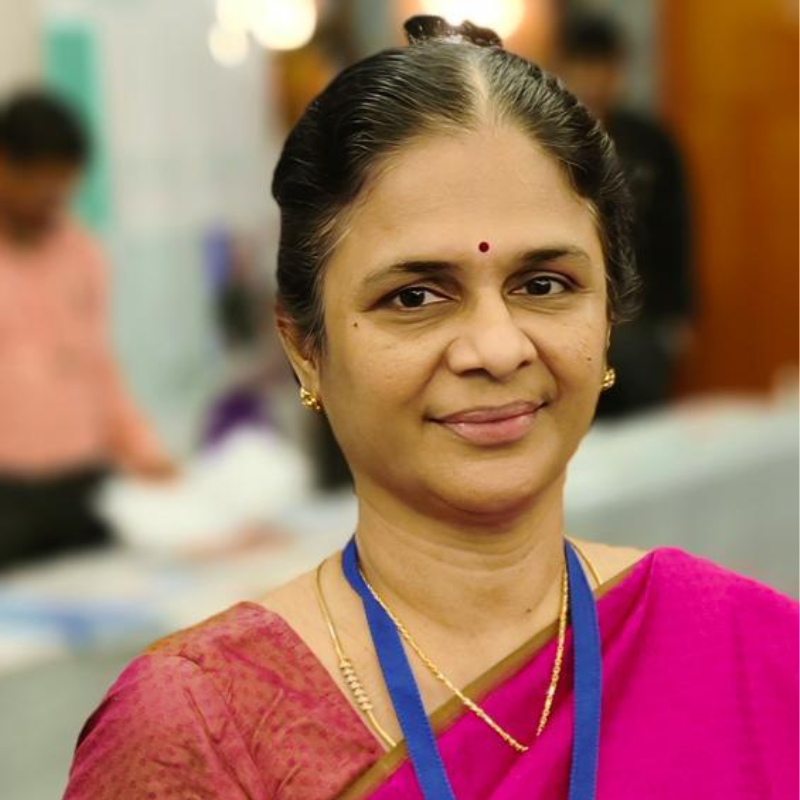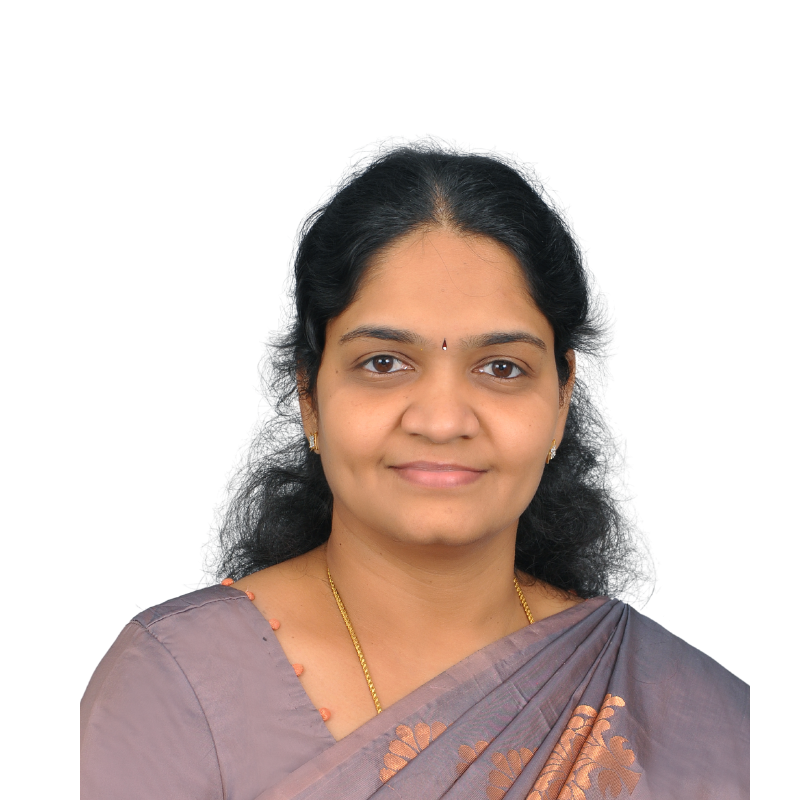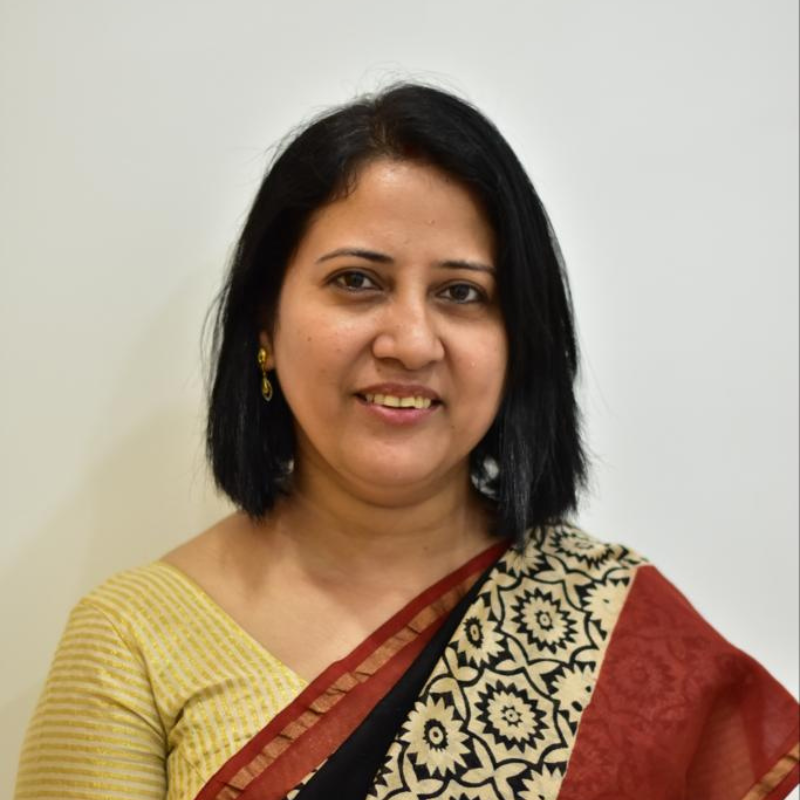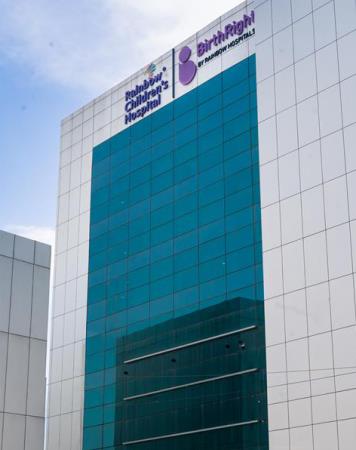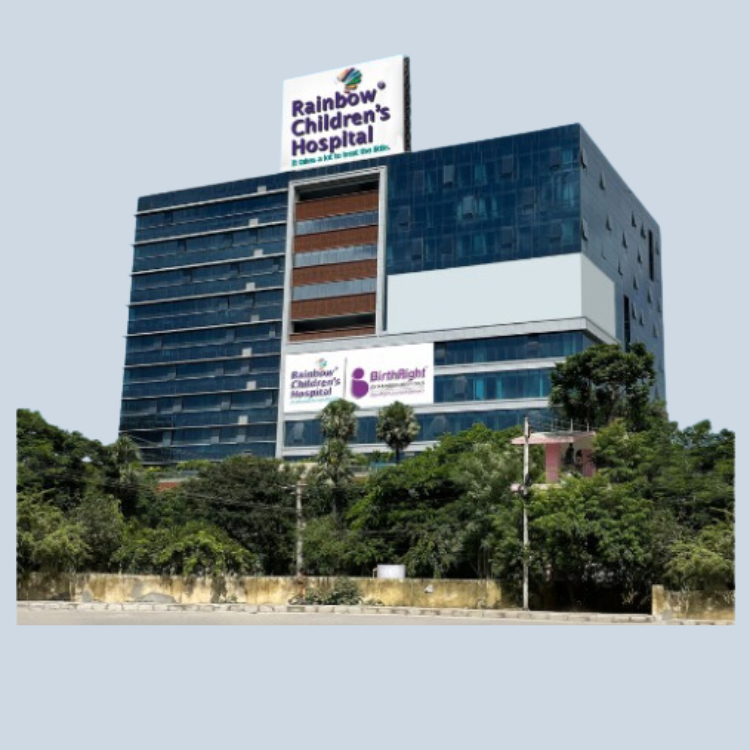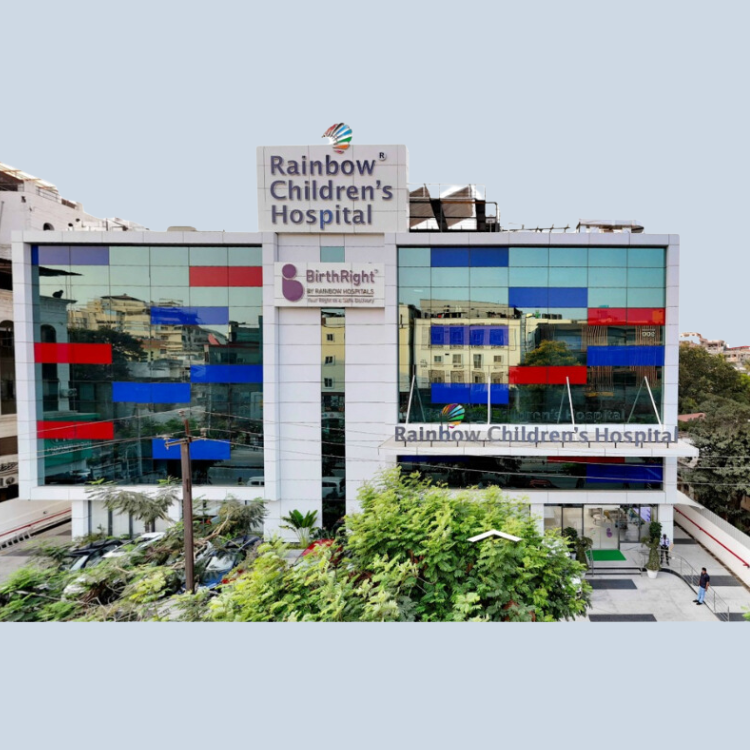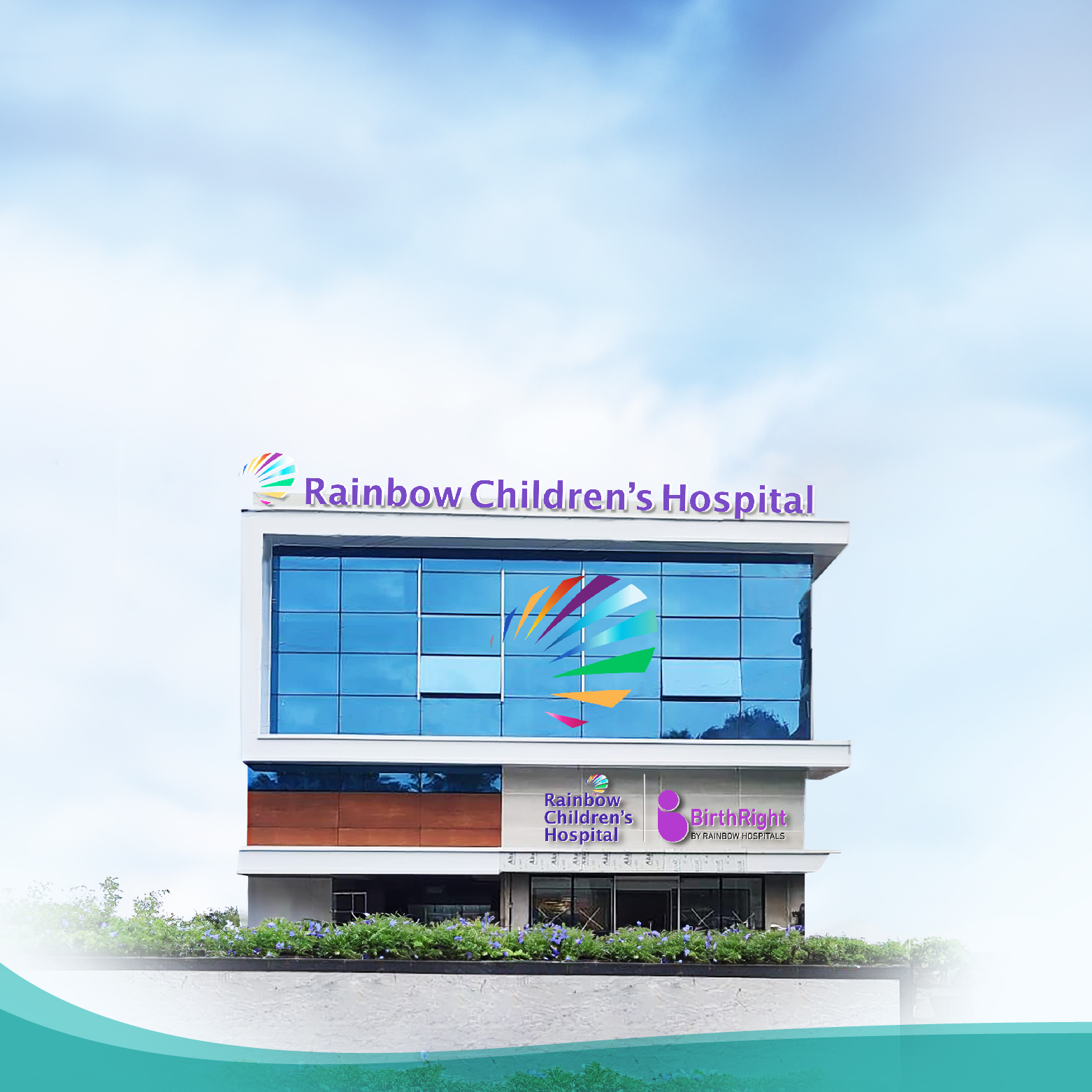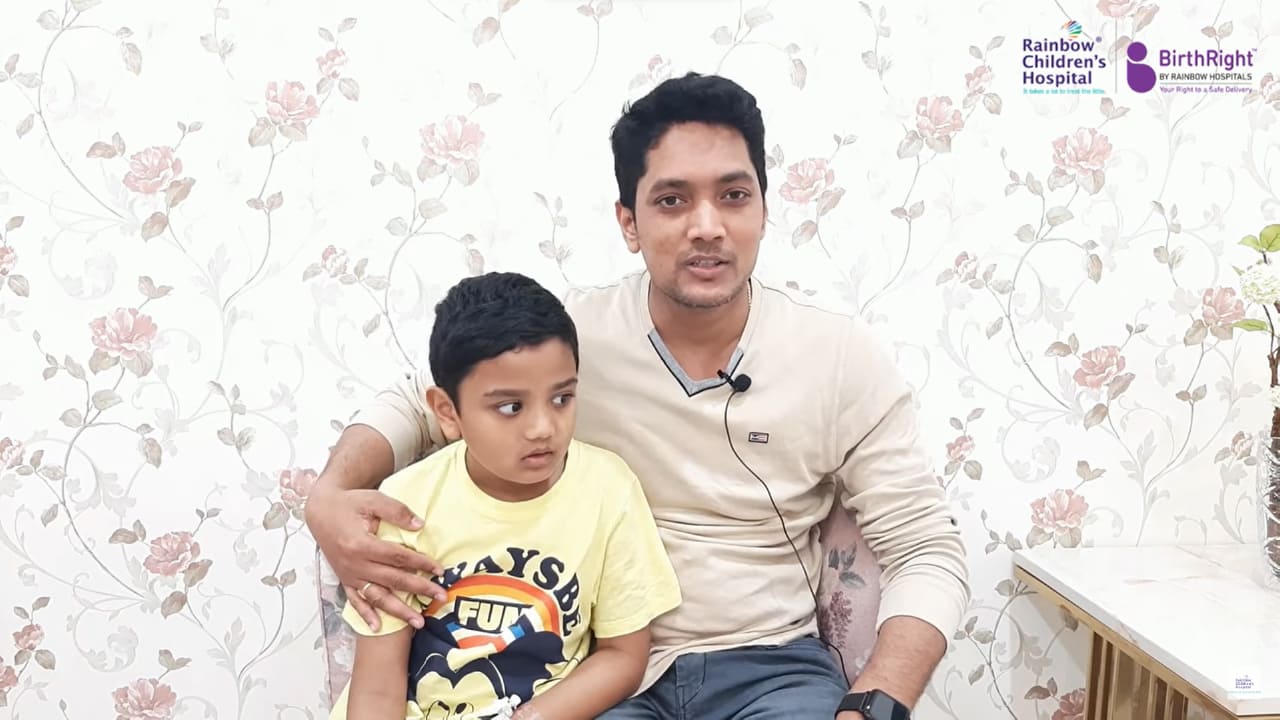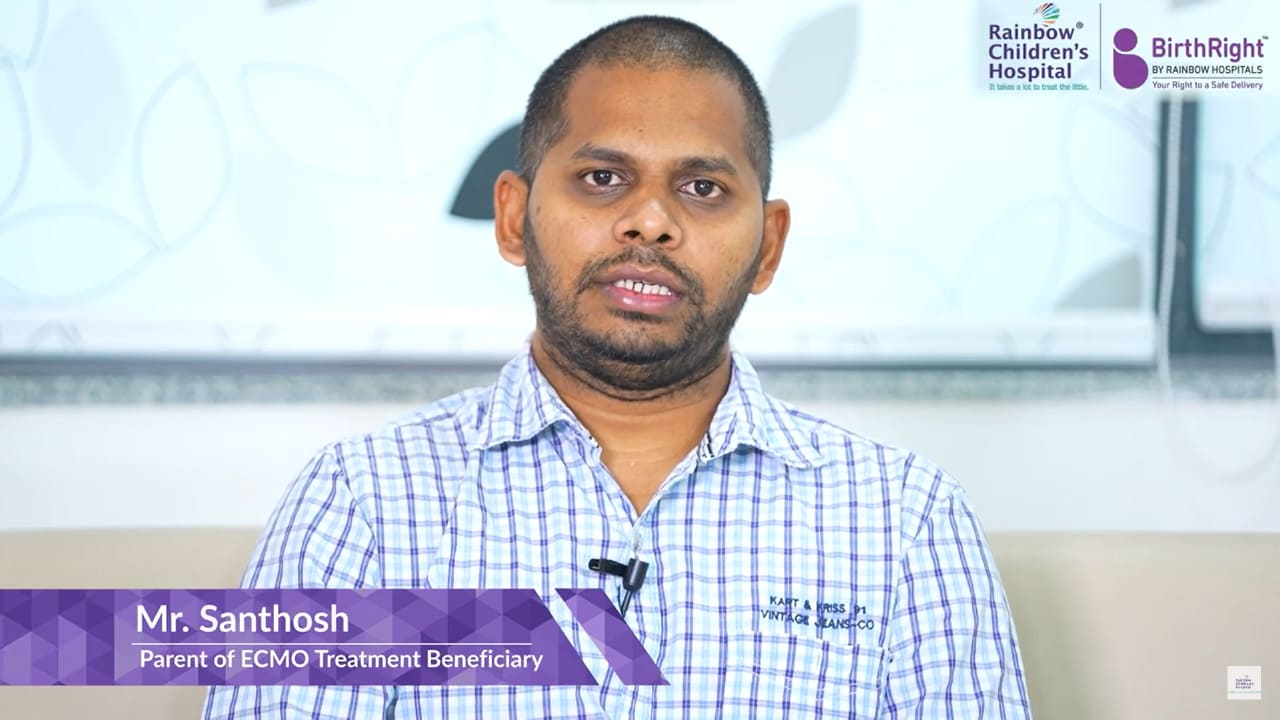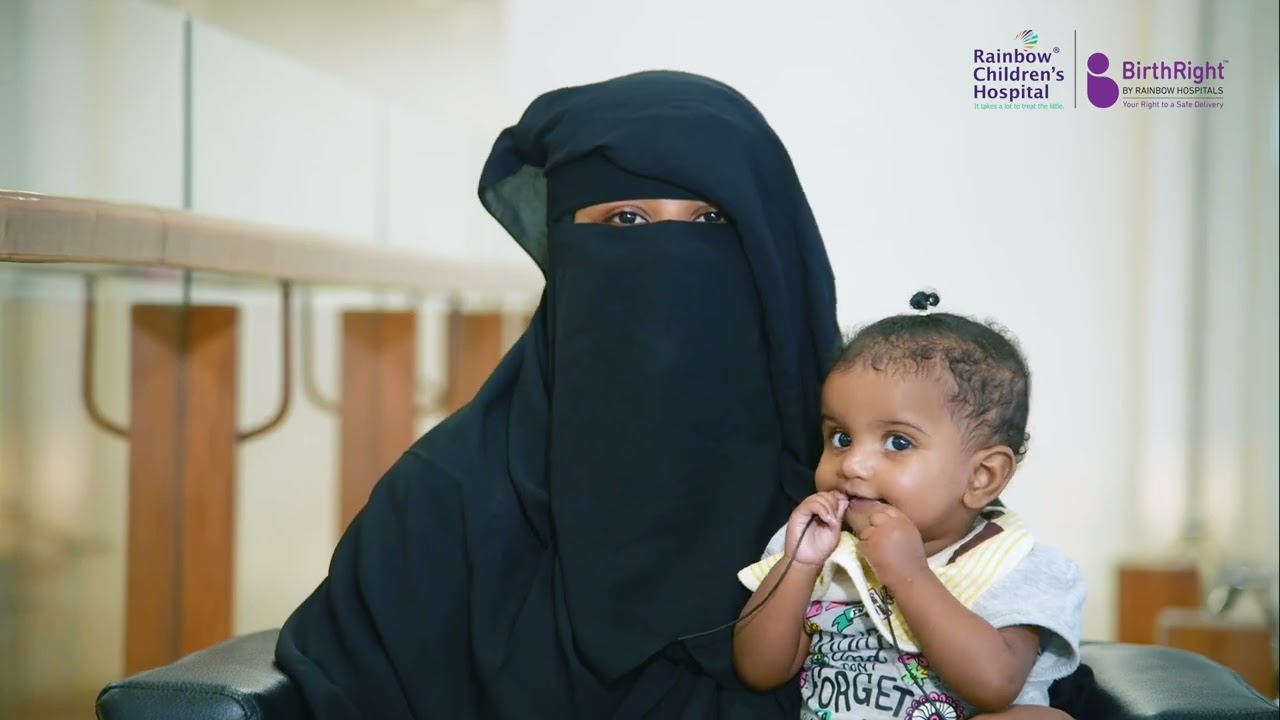Seamless support from diagnosis to post treatment care
Pediatric Hematology & Oncology & BMT
Pediatric Hematology pertains to the pediatric specialty that addresses disorders affecting blood production and clotting specifically in children. In their early years, children are susceptible to blood production defects stemming from factors such as nutritional deficiencies, which can lead to conditions like megaloblastic anemia, iron deficiency anemia, or hemolytic anemias including Thalassemia and Sickle Cell Anemia.
On the other hand, Pediatric Oncology represents a specialized domain of expertise dedicated to treating and curing children afflicted with conditions such as acute leukemia, neuroblastoma, lymph node cancer, and brain tumors, ultimately enhancing their quality of life. The precise cause of childhood malignancies remains largely unknown, but it is noteworthy that a significant proportion of these tumors and cancers are amenable to treatment.
Within the confines of Rainbow Children's Hospital, our Pediatric Hematology and Oncology departments possess a wealth of experience in managing high-risk cases, including Acute Leukemia, Lymphomas, and Solid Tumors. Our comprehensive care framework includes the provision of Intensive Care Services, Neurology, Nephrology, and Hepatology. This holistic approach is further fortified by an Infection Control Team, Dietician, Nutritionist, and Psychology experts, all working in unison to ensure the overall well-being of children following their treatment journey. Notably, we have successfully treated over 1400 cases of Pediatric malignancies, offering intensive care and curative solutions for children who need them most. Our team of expert Pediatric Oncologists possesses extensive experience in addressing a wide range of cancers and conducting bone marrow transplants, offering a fresh lease on life to these young patients.
The Department of Pediatric Hematology and Oncology at Rainbow Children’s Hospital is well-equipped to provide care to children diagnosed with the following conditions:
-
Acute leukemia (blood cancer)
-
Neuroblastoma
-
Lymphomas (lymph node cancer)
-
Brain tumors
-
Germ cell tumors
-
Wilms tumor (affecting the kidney)
-
Osteosarcoma (bone-related)
-
Ewing’s sarcoma
-
Rhabdomyosarcomas
-
Hepatoblastoma (related to the liver)
-
Soft tissue sarcomas
-
Refractory anemias, including remitting relapsing autoimmune hemolytic anemias
-
Chronic Immune Thrombocytopenia (ITP) requiring second-line medications
-
Hemoglobinopathies
-
Nutritional anemias
-
Other inherited anemias
-
Aplastic anemias demanding Immuno-Suppressive Therapy alongside CSA and ATG.
Key Highlights:
-
Specialises in handling high risk cancer & non-malignant conditions that are curable with stem cell transplants
-
State-of-the-art infrastructure
-
Specially trained nursing staff well versed with handling various procedures, preparations & other nursing aspects to provide quality care to patients

Find a Doctor
Expertise you can trust, Meet our esteemed doctors who bring exceptional knowledge, compassion, and innovation to provide top-notch care for your health and well-being.
Our Hospitals and ClinicsOur Hospitals and Clinics
Rainbow Children's Hospital stands as a testament to the hospital's continual pursuit of excellence and innovation, providing specialized care for women and children.
Request a Call back
Tap to Fill FormRequest a Call back
Blogs
Discover our most recent health articles provided by our reliable experts.
What Are People Saying About Us
Embark on a journey of inspiration and hope with our patient success stories, complemented by informative videos from our dedicated doctors.
The Rainbow Children’s Hospital is directed by an expert team of medical professionals and best pediatric hematologist who are dedicated to providing pediatric patients treatment through the latest breakthroughs in hematology and oncology treatment. The department has first-class technology and expertise for managing solid tumors.
Write a list of all the questions you have regarding the diagnosis and treatment of your child. Ask all the questions to the doctor.
It is important that you are stressed free as well. For this, you need to also bring things to the hospital to help you with your stay. Maintaining your physical and emotional health during surgery and post-operative treatment of your child is essential.
Pediatric hematology and oncology treatments are complicated. At the Rainbow Children’s Hospital, we provide you and your child with a gentle, comfortable, informative, and comprehensive environment with high-tech supportive medicine.\n\nApart from this, you can try consulting child life specialists and art therapists to help you. You can also ask the school administration to help your child with going back to school. When it comes to hematology and oncology conditions, early diagnosis and treatments are very important for getting good results. It will also help put parent’s minds at peace. The sooner you get the treatment for your child, the sooner they will be able to get back to their normal life.\n\nIf you are not sure about the treatment, you can try getting a second opinion from a pediatric hematologist near you or oncologist. This will help you get sure that the best way to move forward is through prescribed treatment. :12929, 3,, 15 Merriweather
Pediatric hematology and oncology treatments are complicated. At the Rainbow Children’s Hospital, we provide you and your child with a gentle, comfortable, informative, and comprehensive environment with high-tech supportive medicine.\n\nApart from this, you can try consulting child life specialists and art therapists to help you. You can also ask the school administration to help your child with going back to school. When it comes to hematology and oncology conditions, early diagnosis and treatments are very important for getting good results. It will also help put parent’s minds at peace. The sooner you get the treatment for your child, the sooner they will be able to get back to their normal life.\n\nIf you are not sure about the treatment, you can try getting a second opinion from a pediatric hematologist near you or oncologist. This will help you get sure that the best way to move forward is through prescribed treatment. :12929, 3,, 15 Merriweather Apart from this, you can try consulting child life specialists and art therapists to help you. You can also ask the school administration to help your child with going back to school. When it comes to hematology and oncology conditions, early diagnosis and treatments are very important for getting good results. It will also help put parent’s minds at peace. The sooner you get the treatment for your child, the sooner they will be able to get back to their normal life.
Pediatric hematology and oncology treatments are complicated. At the Rainbow Children’s Hospital, we provide you and your child with a gentle, comfortable, informative, and comprehensive environment with high-tech supportive medicine.\n\nApart from this, you can try consulting child life specialists and art therapists to help you. You can also ask the school administration to help your child with going back to school. When it comes to hematology and oncology conditions, early diagnosis and treatments are very important for getting good results. It will also help put parent’s minds at peace. The sooner you get the treatment for your child, the sooner they will be able to get back to their normal life.\n\nIf you are not sure about the treatment, you can try getting a second opinion from a pediatric hematologist near you or oncologist. This will help you get sure that the best way to move forward is through prescribed treatment. :12929, 3,, 15 Merriweather
Pediatric hematology and oncology treatments are complicated. At the Rainbow Children’s Hospital, we provide you and your child with a gentle, comfortable, informative, and comprehensive environment with high-tech supportive medicine.\n\nApart from this, you can try consulting child life specialists and art therapists to help you. You can also ask the school administration to help your child with going back to school. When it comes to hematology and oncology conditions, early diagnosis and treatments are very important for getting good results. It will also help put parent’s minds at peace. The sooner you get the treatment for your child, the sooner they will be able to get back to their normal life.\n\nIf you are not sure about the treatment, you can try getting a second opinion from a pediatric hematologist near you or oncologist. This will help you get sure that the best way to move forward is through prescribed treatment. :12929, 3,, 15 Merriweather If you are not sure about the treatment, you can try getting a second opinion from a pediatric hematologist near you or oncologist. This will help you get sure that the best way to move forward is through prescribed treatment.
Bone marrow failure syndromes - Bone marrow failure is the result of the inability of the bone marrow to make proper blood cells. The treatment for this syndrome in children will depend on the cause of the failure.
The most common forms of blood conditions and pediatric cancer include the following:\n\n Bone marrow failure syndromes - Bone marrow failure is the result of the inability of the bone marrow to make proper blood cells. The treatment for this syndrome in children will depend on the cause of the failure.\n Clotting and bleeding disorders - This condition is caused when excessive and unnecessary clotting starts blocking the flow of blood to the vital organs. Blood-thinning medications can be used for treating this condition.\n Childhood cancers - Depending on the type and severity of cancer, you will get a number of treatment options for your child. This can include chemotherapy, surgery, immunotherapy, radiation therapy, or a combination of some of these.\n Childhood skin cancer - Although very rare, skin cancer can still occur in children. If your child has an unusually large and odd-looking mole, you should immediately see a dermatologist.\n Leukemia or blood cancer - Children with blood cancers should be regularly monitored. This condition can be treated with radiation therapy, stem-cell transplants, chemotherapy, or a combination of these methods.\n Myelodysplasia - This is a rare bone marrow disease. Treatment of this condition is highly specialized. Failure to treat myelodysplasia can lead to leukemia or blood cancer.\n Survivorship - If your child has survived cancer, he/she can see side effects for months or even years after the treatment. Some hospitals help childhood cancer survivors with long-term care so that they can stay healthy :12929, 3,, 15 Merriweather Clotting and bleeding disorders - This condition is caused when excessive and unnecessary clotting starts blocking the flow of blood to the vital organs. Blood-thinning medications can be used for treating this condition.
The most common forms of blood conditions and pediatric cancer include the following:\n\n Bone marrow failure syndromes - Bone marrow failure is the result of the inability of the bone marrow to make proper blood cells. The treatment for this syndrome in children will depend on the cause of the failure.\n Clotting and bleeding disorders - This condition is caused when excessive and unnecessary clotting starts blocking the flow of blood to the vital organs. Blood-thinning medications can be used for treating this condition.\n Childhood cancers - Depending on the type and severity of cancer, you will get a number of treatment options for your child. This can include chemotherapy, surgery, immunotherapy, radiation therapy, or a combination of some of these.\n Childhood skin cancer - Although very rare, skin cancer can still occur in children. If your child has an unusually large and odd-looking mole, you should immediately see a dermatologist.\n Leukemia or blood cancer - Children with blood cancers should be regularly monitored. This condition can be treated with radiation therapy, stem-cell transplants, chemotherapy, or a combination of these methods.\n Myelodysplasia - This is a rare bone marrow disease. Treatment of this condition is highly specialized. Failure to treat myelodysplasia can lead to leukemia or blood cancer.\n Survivorship - If your child has survived cancer, he/she can see side effects for months or even years after the treatment. Some hospitals help childhood cancer survivors with long-term care so that they can stay healthy :12929, 3,, 15 Merriweather Childhood cancers - Depending on the type and severity of cancer, you will get a number of treatment options for your child. This can include chemotherapy, surgery, immunotherapy, radiation therapy, or a combination of some of these.
Childhood skin cancer - Although very rare, skin cancer can still occur in children. If your child has an unusually large and odd-looking mole, you should immediately see a dermatologist.
The most common forms of blood conditions and pediatric cancer include the following:\n\n Bone marrow failure syndromes - Bone marrow failure is the result of the inability of the bone marrow to make proper blood cells. The treatment for this syndrome in children will depend on the cause of the failure.\n Clotting and bleeding disorders - This condition is caused when excessive and unnecessary clotting starts blocking the flow of blood to the vital organs. Blood-thinning medications can be used for treating this condition.\n Childhood cancers - Depending on the type and severity of cancer, you will get a number of treatment options for your child. This can include chemotherapy, surgery, immunotherapy, radiation therapy, or a combination of some of these.\n Childhood skin cancer - Although very rare, skin cancer can still occur in children. If your child has an unusually large and odd-looking mole, you should immediately see a dermatologist.\n Leukemia or blood cancer - Children with blood cancers should be regularly monitored. This condition can be treated with radiation therapy, stem-cell transplants, chemotherapy, or a combination of these methods.\n Myelodysplasia - This is a rare bone marrow disease. Treatment of this condition is highly specialized. Failure to treat myelodysplasia can lead to leukemia or blood cancer.\n Survivorship - If your child has survived cancer, he/she can see side effects for months or even years after the treatment. Some hospitals help childhood cancer survivors with long-term care so that they can stay healthy :12929, 3,, 15 Merriweather Leukemia or blood cancer - Children with blood cancers should be regularly monitored. This condition can be treated with radiation therapy, stem-cell transplants, chemotherapy, or a combination of these methods.
The most common forms of blood conditions and pediatric cancer include the following:\n\n Bone marrow failure syndromes - Bone marrow failure is the result of the inability of the bone marrow to make proper blood cells. The treatment for this syndrome in children will depend on the cause of the failure.\n Clotting and bleeding disorders - This condition is caused when excessive and unnecessary clotting starts blocking the flow of blood to the vital organs. Blood-thinning medications can be used for treating this condition.\n Childhood cancers - Depending on the type and severity of cancer, you will get a number of treatment options for your child. This can include chemotherapy, surgery, immunotherapy, radiation therapy, or a combination of some of these.\n Childhood skin cancer - Although very rare, skin cancer can still occur in children. If your child has an unusually large and odd-looking mole, you should immediately see a dermatologist.\n Leukemia or blood cancer - Children with blood cancers should be regularly monitored. This condition can be treated with radiation therapy, stem-cell transplants, chemotherapy, or a combination of these methods.\n Myelodysplasia - This is a rare bone marrow disease. Treatment of this condition is highly specialized. Failure to treat myelodysplasia can lead to leukemia or blood cancer.\n Survivorship - If your child has survived cancer, he/she can see side effects for months or even years after the treatment. Some hospitals help childhood cancer survivors with long-term care so that they can stay healthy :12929, 3,, 15 Merriweather Myelodysplasia - This is a rare bone marrow disease. Treatment of this condition is highly specialized. Failure to treat myelodysplasia can lead to leukemia or blood cancer.
The most common forms of blood conditions and pediatric cancer include the following:\n\n Bone marrow failure syndromes - Bone marrow failure is the result of the inability of the bone marrow to make proper blood cells. The treatment for this syndrome in children will depend on the cause of the failure.\n Clotting and bleeding disorders - This condition is caused when excessive and unnecessary clotting starts blocking the flow of blood to the vital organs. Blood-thinning medications can be used for treating this condition.\n Childhood cancers - Depending on the type and severity of cancer, you will get a number of treatment options for your child. This can include chemotherapy, surgery, immunotherapy, radiation therapy, or a combination of some of these.\n Childhood skin cancer - Although very rare, skin cancer can still occur in children. If your child has an unusually large and odd-looking mole, you should immediately see a dermatologist.\n Leukemia or blood cancer - Children with blood cancers should be regularly monitored. This condition can be treated with radiation therapy, stem-cell transplants, chemotherapy, or a combination of these methods.\n Myelodysplasia - This is a rare bone marrow disease. Treatment of this condition is highly specialized. Failure to treat myelodysplasia can lead to leukemia or blood cancer.\n Survivorship - If your child has survived cancer, he/she can see side effects for months or even years after the treatment. Some hospitals help childhood cancer survivors with long-term care so that they can stay healthy :12929, 3,, 15 Merriweather Survivorship - If your child has survived cancer, he/she can see side effects for months or even years after the treatment. Some hospitals help childhood cancer survivors with long-term care so that they can stay healthy
Quick Links
- Best Pediatric Hemato Oncologists In Hyderabad
- Best Pediatric Hemato Oncologists In Bangalore
- Best Pediatric Hemato Oncologists In Delhi
- Best Pediatric Hemato Oncologists In Chennai
- Best Pediatric Hemato Oncologists In Vijayawada
- Best Pediatric Hemato Oncologists In Vizag
- Best Pediatric Hemato Oncologists In Hyder Nagar
- Best Pediatric Hemato Oncologists In Secunderabad
- Best Pediatric Hemato Oncologists In Marathahalli
- Best Pediatric Hemato Oncologists In Bannerghatta
- Best Pediatric Hemato Oncologists In Malviya Nagar
- Best Pediatric Hemato Oncologists In Currency Nagar
- Best Pediatric Hemato Oncologists In Banjarahills
- Top Pediatric Hemato Oncologists in India
- Pediatric Cancer Specialist in Hyderabad
- Pediatric Cancer Specialist in Bangalore
- Pediatric Cancer Specialist in Delhi
- Pediatric Cancer Specialist in Chennai
- Pediatric Cancer Specialist in Vijayawada
- Pediatric Cancer Specialist in Vizag
- Pediatric Cancer Doctor Hyderabad
- Pediatric Cancer Doctor Bangalore
- Pediatric Oncologist In India
- Best Pediatric Oncologist In India
- Top Pediatric Oncologist In India
- Famous Pediatric Oncologist In India
- Top Pediatric Oncologist In India
- Famous Pediatric Oncologist In India
- Best Pediatric Oncologist In India
- Pediatric Oncologist In India
- Best Pediatric Hematologist In India
- Top Pediatric Hematologist In India
- Famous Pediatric Hematologist In India
- Top Pediatric Hematologist In India
- Famous Pediatric Hematologist In India
- Best Pediatric Hematologist In India
- Pediatric Hematologist In India
- Pediatric Hemato Oncologists near me in Banjarahills
- Pediatric Hemato Oncologists near me in Hyder Nagar
- Pediatric Hemato Oncologists near me in Secunderabad
- Best Treatment for Cancer in Children, Hyderabad
- Best Treatment for Leukemia in Children, Hyderabad
- Best Treatment for Thrombosis in Children, Hyderabad
- Best Treatment for Polycythemia in Children, Hyderabad
- Best Treatment for Aplastic Anemia in Children, Hyderabad
- Best Treatment for Hemolytic Anemia in Children, Hyderabad
- Best Treatment for Non-Hodgkin Lymphoma in Children, Hyderabad
- Best Treatment for Retinoblastoma in Children, Hyderabad
- Best Treatment for Sickle Cell Disease in Children, Hyderabad
- Best Treatment for Langerhans Cell Histiocytosis in Children, Hyderabad
- Best Treatment for Neuroblastoma in Children, Hyderabad
- Best Treatment for Von Willebrand Disease in Children, Hyderabad
- Best Treatment for Acute Lymphoblastic Leukemia in Children, Hyderabad
- Best Treatment for Myelodysplastic Syndrome in Children, Hyderabad
- Best Treatment for Craniopharyngioma in Children, Hyderabad
- Best Treatment for Fanconi Anemia in Children, Hyderabad
- Best Treatment for Chronic Myeloid Leukemia in Children, Hyderabad
- Best Treatment for Rhabdomyosarcoma in Children, Hyderabad
- Best Treatment for Stem Cell Transplant in Children, Hyderabad
- Best Treatment for Autoimmune Hemolytic Anemia in Children, Hyderabad
- Best Treatment for Liposarcoma in Children, Hyderabad
- Best Treatment for Germ Cell Tumors in Children, Hyderabad
- Best Treatment for Synovial Sarcoma in Children, Hyderabad
- Best Treatment for Fibrosarcoma in Children, Hyderabad
- Best Treatment for Myeloproliferative Neoplasms in Children, Hyderabad
- Best Treatment for Hepatoblastoma in Children, Hyderabad
- Best Treatment for Immune Thrombocytopenia in Children, Hyderabad
- Best Treatment for Heart Tumor in Children, Hyderabad
- Best Treatment for Ganglioglioma in Children, Hyderabad
- Best Treatment for Optic Nerve Glioma in Children, Hyderabad
- Best Treatment for Cyclic Neutropenia in Children, Hyderabad
- Best Treatment for Low-grade Glioma in Children, Hyderabad
- Best Treatment for Lymphoblastic Lymphoma in Children, Hyderabad
- Best Treatment for Diffuse Intrinsic Pontine Glioma in Children, Hyderabad
- Best Treatment for Epithelioid Hemangioendothelioma in Children, Hyderabad
- Best Treatment for Pearson Syndrome in Children, Hyderabad
- Best Treatment for Fallopian tube cancer in Children, Hyderabad
- Best Treatment for Congenital Dyserythropoietic Anemia in Children, Hyderabad
- Best Treatment for Germinoma in Children, Hyderabad
- Best Treatment for Platelet Function Disorders in Children, Hyderabad
- Best Treatment for Intrauterine transfusion in Children, Hyderabad
- Best Treatment for Alveolar Soft Part Sarcoma in Children, Hyderabad
- Best Treatment for Fertility preservation in Children, Hyderabad
- Best Treatment for Kaposiform Hemangioendothelioma in Children, Hyderabad
- Best Treatment for Juvenile Myelomonocytic Leukemia in Children, Hyderabad
- Best Treatment for Large Cell Lymphoma in Children, Hyderabad
- Best Treatment for Red Blood Cell Disorders in Children, Hyderabad
- Best Treatment for Iron-Refractory Iron Deficiency Anemia in Children, Hyderabad
- Best Treatment for White Blood Cell Disorders in Children, Hyderabad
- Best Treatment for Undifferentiated Embryonal Sarcoma of the Liver (UESL) in Children, Hyderabad
- Best Treatment for Cervical Teratoma in Children, Hyderabad
- Best Treatment for Congenital Sideroblastic Anemia in Children, Hyderabad
- Best Treatment for Generalized Lymphatic Anomaly in Children, Hyderabad
- Best Treatment for Kasabach Merritt in Children, Hyderabad
- Best Treatment for Malignant Rhabdoid Tumor in Children, Hyderabad
- Best Treatment for Cancer in Children, Bengaluru
- Best Treatment for Leukemia in Children, Bengaluru
- Best Treatment for Thrombosis in Children, Bengaluru
- Best Treatment for Polycythemia in Children, Bengaluru
- Best Treatment for Aplastic Anemia in Children, Bengaluru
- Best Treatment for Hemolytic Anemia in Children, Bengaluru
- Best Treatment for Non-Hodgkin Lymphoma in Children, Bengaluru
- Best Treatment for Retinoblastoma in Children, Bengaluru
- Best Treatment for Sickle Cell Disease in Children, Bengaluru
- Best Treatment for Langerhans Cell Histiocytosis in Children, Bengaluru
- Best Treatment for Neuroblastoma in Children, Bengaluru
- Best Treatment for Von Willebrand Disease in Children, Bengaluru
- Best Treatment for Acute Lymphoblastic Leukemia in Children, Bengaluru
- Best Treatment for Myelodysplastic Syndrome in Children, Bengaluru
- Best Treatment for Craniopharyngioma in Children, Bengaluru
- Best Treatment for Fanconi Anemia in Children, Bengaluru
- Best Treatment for Chronic Myeloid Leukemia in Children, Bengaluru
- Best Treatment for Rhabdomyosarcoma in Children, Bengaluru
- Best Treatment for Stem Cell Transplant in Children, Bengaluru
- Best Treatment for Autoimmune Hemolytic Anemia in Children, Bengaluru
- Best Treatment for Liposarcoma in Children, Bengaluru
- Best Treatment for Germ Cell Tumors in Children, Bengaluru
- Best Treatment for Synovial Sarcoma in Children, Bengaluru
- Best Treatment for Fibrosarcoma in Children, Bengaluru
- Best Treatment for Myeloproliferative Neoplasms in Children, Bengaluru
- Best Treatment for Hepatoblastoma in Children, Bengaluru
- Best Treatment for Immune Thrombocytopenia in Children, Bengaluru
- Best Treatment for Heart Tumor in Children, Bengaluru
- Best Treatment for Ganglioglioma in Children, Bengaluru
- Best Treatment for Optic Nerve Glioma in Children, Bengaluru
- Best Treatment for Cyclic Neutropenia in Children, Bengaluru
- Best Treatment for Low-grade Glioma in Children, Bengaluru
- Best Treatment for Lymphoblastic Lymphoma in Children, Bengaluru
- Best Treatment for Diffuse Intrinsic Pontine Glioma in Children, Bengaluru
- Best Treatment for Epithelioid Hemangioendothelioma in Children, Bengaluru
- Best Treatment for Pearson Syndrome in Children, Bengaluru
- Best Treatment for Fallopian tube cancer in Children, Bengaluru
- Best Treatment for Congenital Dyserythropoietic Anemia in Children, Bengaluru
- Best Treatment for Germinoma in Children, Bengaluru
- Best Treatment for Platelet Function Disorders in Children, Bengaluru
- Best Treatment for Intrauterine transfusion in Children, Bengaluru
- Best Treatment for Alveolar Soft Part Sarcoma in Children, Bengaluru
- Best Treatment for Fertility preservation in Children, Bengaluru
- Best Treatment for Kaposiform Hemangioendothelioma in Children, Bengaluru
- Best Treatment for Juvenile Myelomonocytic Leukemia in Children, Bengaluru
- Best Treatment for Large Cell Lymphoma in Children, Bengaluru
- Best Treatment for Red Blood Cell Disorders in Children, Bengaluru
- Best Treatment for Iron-Refractory Iron Deficiency Anemia in Children, Bengaluru
- Best Treatment for White Blood Cell Disorders in Children, Bengaluru
- Best Treatment for Undifferentiated Embryonal Sarcoma of the Liver (UESL) in Children, Bengaluru
- Best Treatment for Cervical Teratoma in Children, Bengaluru
- Best Treatment for Congenital Sideroblastic Anemia in Children, Bengaluru
- Best Treatment for Generalized Lymphatic Anomaly in Children, Bengaluru
- Best Treatment for Kasabach Merritt in Children, Bengaluru
- Best Treatment for Malignant Rhabdoid Tumor in Children, Bengaluru
- Best Treatment for Cancer in Children, Delhi
- Best Treatment for Leukemia in Children, Delhi
- Best Treatment for Thrombosis in Children, Delhi
- Best Treatment for Polycythemia in Children, Delhi
- Best Treatment for Aplastic Anemia in Children, Delhi
- Best Treatment for Hemolytic Anemia in Children, Delhi
- Best Treatment for Non-Hodgkin Lymphoma in Children, Delhi
- Best Treatment for Retinoblastoma in Children, Delhi
- Best Treatment for Sickle Cell Disease in Children, Delhi
- Best Treatment for Langerhans Cell Histiocytosis in Children, Delhi
- Best Treatment for Neuroblastoma in Children, Delhi
- Best Treatment for Von Willebrand Disease in Children, Delhi
- Best Treatment for Acute Lymphoblastic Leukemia in Children, Delhi
- Best Treatment for Myelodysplastic Syndrome in Children, Delhi
- Best Treatment for Craniopharyngioma in Children, Delhi
- Best Treatment for Fanconi Anemia in Children, Delhi
- Best Treatment for Chronic Myeloid Leukemia in Children, Delhi
- Best Treatment for Rhabdomyosarcoma in Children, Delhi
- Best Treatment for Stem Cell Transplant in Children, Delhi
- Best Treatment for Autoimmune Hemolytic Anemia in Children, Delhi
- Best Treatment for Liposarcoma in Children, Delhi
- Best Treatment for Germ Cell Tumors in Children, Delhi
- Best Treatment for Synovial Sarcoma in Children, Delhi
- Best Treatment for Fibrosarcoma in Children, Delhi
- Best Treatment for Myeloproliferative Neoplasms in Children, Delhi`
- Best Treatment for Diamond-Blackfan Anemia in Children, Delhi
- Best Treatment for Hepatoblastoma in Children, Delhi
- Best Treatment for Immune Thrombocytopenia in Children, Delhi
- Best Treatment for Heart Tumor in Children, Delhi
- Best Treatment for Ganglioglioma in Children, Delhi
- Best Treatment for Optic Nerve Glioma in Children, Delhi
- Best Treatment for Cyclic Neutropenia in Children, Delhi
- Best Treatment for Low-grade Glioma in Children, Delhi
- Best Treatment for Lymphoblastic Lymphoma in Children, Delhi
- Best Treatment for Diffuse Intrinsic Pontine Glioma in Children, Delhi
- Best Treatment for Epithelioid Hemangioendothelioma in Children, Delhi
- Best Treatment for Pearson Syndrome in Children, Delhi
- Best Treatment for Fallopian tube cancer in Children, Delhi
- Best Treatment for Congenital Dyserythropoietic Anemia in Children, Delhi
- Best Treatment for Germinoma in Children, Delhi
- Best Treatment for Platelet Function Disorders in Children, Delhi
- Best Treatment for Intrauterine transfusion in Children, Delhi
- Alveolar Soft Part Sarcoma in Children, Delhi
- Fertility preservation in Children, Delhi
- Red Blood Cell Disorders in Children, Delhi
- Iron-Refractory Iron Deficiency Anemia in Children, Delhi
- White Blood Cell Disorders in Children, Delhi
- Undifferentiated Embryonal Sarcoma of the Liver (UESL) in Children, Delhi
- Cervical Teratoma in Children, Delhi
- Congenital Sideroblastic Anemia in Children, Delhi
- Kasabach Merritt in Children, Delhi
- Malignant Rhabdoid Tumor in Children, Delhi
- Cancer in Children, Chennai
- Thrombosis in Children, Chennai
- Aplastic Anemia in Children, Chennai
- Hemolytic Anemia in Children, Chennai
- Non-Hodgkin Lymphoma in Children, Chennai
- Retinoblastoma in Children, Chennai
- Sickle Cell Disease in Children, Chennai
- Neuroblastoma in Children, Chennai
- Myelodysplastic Syndrome in Children, Chennai
- Craniopharyngioma in Children, Chennai
- Chronic Myeloid Leukemia in Children, Chennai
- Rhabdomyosarcoma in Children, Chennai
- Liposarcoma in Children, Chennai
- Germ Cell Tumors in Children, Chennai
- Fibrosarcoma in Children, Chennai
- Hepatoblastoma in Children, Chennai
- Heart Tumor in Children, Chennai
- Ganglioglioma in Children, Chennai
- Optic Nerve Glioma in Children, Chennai
- Low-grade Glioma in Children, Chennai
- Lymphoblastic Lymphoma in Children, Chennai
- Diffuse Intrinsic Pontine Glioma in Children, Chennai
- Epithelioid Hemangioendothelioma in Children, Chennai
- Pearson Syndrome in Children, Chennai
- Fallopian tube cancer in Children, Chennai
- Congenital Dyserythropoietic Anemia in Children, Chennai
- Germinoma in Children, Chennai
- Platelet Function Disorders in Children, Chennai
- Intrauterine transfusion in Children, Chennai
- Alveolar Soft Part Sarcoma in Children, Chennai
- Red Blood Cell Disorders in Children, Chennai
- Iron-Refractory Iron Deficiency Anemia in Children, Chennai
- White Blood Cell Disorders in Children, Chennai
- Best Treatment for Mediastinal teratoma in Children, Chennai
- Best Treatment for Undifferentiated Embryonal Sarcoma of the Liver (UESL) in Children, Chennai
- Best Treatment for Cervical Teratoma in Children, Chennai
- Best Treatment for Congenital Sideroblastic Anemia in Children, Chennai
- Best Treatment for Generalized Lymphatic Anomaly in Children, Chennai
- Best Treatment for Kasabach Merritt in Children, Chennai
- Best Treatment for Malignant Rhabdoid Tumor in Children, Chennai
- Best Treatment for Cancer in Children, Vijayawada
- Best Treatment for Leukemia in Children, Vijayawada
- Best Treatment for Thrombosis in Children, Vijayawada
- Best Treatment for Polycythemia in Children, Vijayawada
- Best Treatment for Aplastic Anemia in Children, Vijayawada
- Best Treatment for Hemolytic Anemia in Children, Vijayawada
- Best Treatment for Non-Hodgkin Lymphoma in Children, Vijayawada
- Best Treatment for Retinoblastoma in Children, Vijayawada
- Best Treatment for Sickle Cell Disease in Children, Vijayawada
- Best Treatment for Langerhans Cell Histiocytosis in Children, Vijayawada
- Best Treatment for Neuroblastoma in Children, Vijayawada
- Best Treatment for Von Willebrand Disease in Children, Vijayawada
- Best Treatment for Acute Lymphoblastic Leukemia in Children, Vijayawada
- Best Treatment for Myelodysplastic Syndrome in Children, Vijayawada
- Best Treatment for Craniopharyngioma in Children, Vijayawada
- Best Treatment for Fanconi Anemia in Children, Vijayawada
- Best Treatment for Chronic Myeloid Leukemia in Children, Vijayawada
- Best Treatment for Rhabdomyosarcoma in Children, Vijayawada
- Best Treatment for Stem Cell Transplant in Children, Vijayawada
- Best Treatment for Autoimmune Hemolytic Anemia in Children, Vijayawada
- Best Treatment for Liposarcoma in Children, Vijayawada
- Best Treatment for Germ Cell Tumors in Children, Vijayawada
- Best Treatment for Synovial Sarcoma in Children, Vijayawada
- Best Treatment for Fibrosarcoma in Children, Vijayawada
- Best Treatment for Myeloproliferative Neoplasms in Children, Vijayawada
- Best Treatment for Hepatoblastoma in Children, Vijayawada
- Best Treatment for Immune Thrombocytopenia in Children, Vijayawada
- Best Treatment for Heart Tumor in Children, Vijayawada
- Best Treatment for Ganglioglioma in Children, Vijayawada
- Best Treatment for Optic Nerve Glioma in Children, Vijayawada
- Best Treatment for Cyclic Neutropenia in Children, Vijayawada
- Best Treatment for Low-grade Glioma in Children, Vijayawada
- Best Treatment for Lymphoblastic Lymphoma in Children, Vijayawada
- Best Treatment for Diffuse Intrinsic Pontine Glioma in Children, Vijayawada
- Best Treatment for Epithelioid Hemangioendothelioma in Children, Vijayawada
- Best Treatment for Pearson Syndrome in Children, Vijayawada
- Best Treatment for Fallopian tube cancer in Children, Vijayawada
- Best Treatment for Congenital Dyserythropoietic Anemia in Children, Vijayawadaa
- Best Treatment for Germinoma in Children, Vijayawada
- Best Treatment for Platelet Function Disorders in Children, Vijayawada
- Best Treatment for Intrauterine transfusion in Children, Vijayawada
- Best Treatment for Alveolar Soft Part Sarcoma in Children, Vijayawada
- Best Treatment for Fertility preservation in Children, Vijayawada
- Best Treatment for Kaposiform Hemangioendothelioma in Children, Vijayawada
- Best Treatment for Juvenile Myelomonocytic Leukemia in Children, Vijayawada
- Best Treatment for Large Cell Lymphoma in Children, Vijayawada
- Best Treatment for Red Blood Cell Disorders in Children, Vijayawada
- Best Treatment for Iron-Refractory Iron Deficiency Anemia in Children, Vijayawada
- Best Treatment for White Blood Cell Disorders in Children, Vijayawada
- Best Treatment for Undifferentiated Embryonal Sarcoma of the Liver (UESL) in Children, Vijayawada
- Best Treatment for Cervical Teratoma in Children, Vijayawada
- Best Treatment for Congenital Sideroblastic Anemia in Children, Vijayawada
- Best Treatment for Generalized Lymphatic Anomaly in Children, Vijayawada
- Best Treatment for Kasabach Merritt in Children, Vijayawada
- Best Treatment for Malignant Rhabdoid Tumor in Children, Vijayawada
- Best Treatment For Cancer in Children, Vizag
- Best Treatment For Leukemia in Children, Vizag
- Best Treatment For Thrombosis in Children, Vizag
- Best Treatment For Polycythemia in Children, Vizag
- Best Treatment For Aplastic Anemia in Children, Vizag
- Best Treatment For Hemolytic Anemia in Children, Vizag
- Best Treatment For Non-Hodgkin Lymphoma in Children, Vizag
- Best Treatment For Retinoblastoma in Children, Vizag
- Best Treatment For Sickle Cell Disease in Children, Vizag
- Best Treatment For Langerhans Cell Histiocytosis in Children, Vizag
- Best Treatment For Neuroblastoma in Children, Vizag
- Best Treatment For Von Willebrand Disease in Children, Vizag
- Best Treatment For Myelodysplastic Syndrome in Children, Vizag
- Best Treatment For Craniopharyngioma in Children, Vizag
- Best Treatment For Fanconi Anemia in Children, Vizag
- Best Treatment For Chronic Myeloid Leukemia in Children, Vizag
- Best Treatment For Rhabdomyosarcoma in Children, Vizag
- Best Treatment For Stem Cell Transplant in Children, Vizag
- Best Treatment For Autoimmune Hemolytic Anemia in Children, Vizag
- Best Treatment For Liposarcoma in Children, Vizag
- Best Treatment For Germ Cell Tumors in Children, Vizag
- Best Treatment For Synovial Sarcoma in Children, Vizag
- Best Treatment For Fibrosarcoma in Children, Vizag
- Best Treatment For Myeloproliferative Neoplasms in Children, Vizag
- Best Treatment For Hepatoblastoma in Children, Vizag
- Best Treatment For Immune Thrombocytopenia in Children, Vizag
- Best Treatment For Heart Tumor in Children, Vizag
- Best Treatment For Ganglioglioma in Children, Vizag
- Best Treatment For Optic Nerve Glioma in Children, Vizag
- Best Pediatric Hematology & Oncology & BMT in Sarjapur Road, Bengaluru
- Best Pediatric Hematology & Oncology & BMT in Himayatnagar, Hyderabad
- Best Pediatric Hematology & Oncology & BMT in Anna Nagar, Chennai
- Best Pediatric Hematologist in Anna Nagar
- Best Oncologist in Anna Nagar, Chennai - Rainbow Children's Hospital


